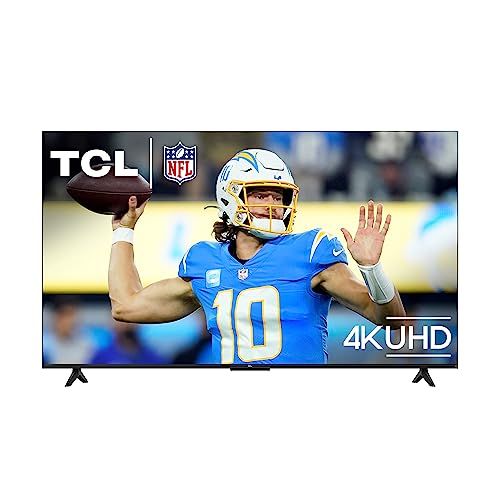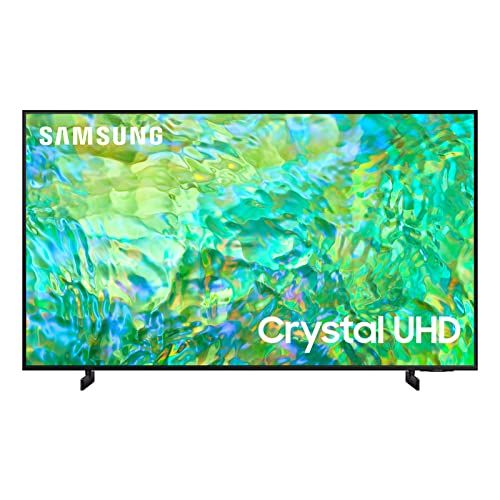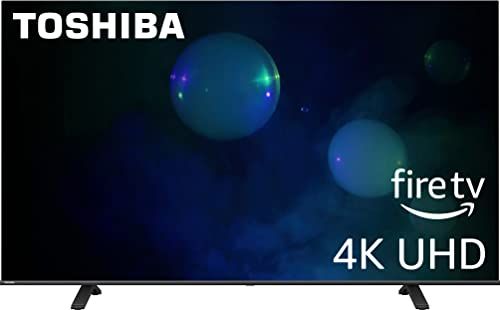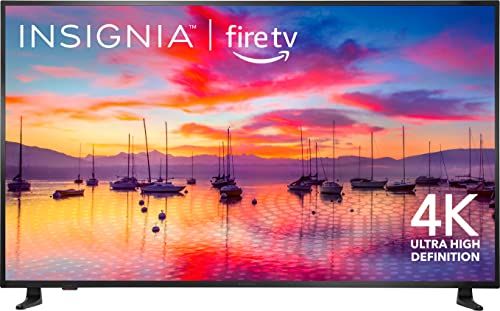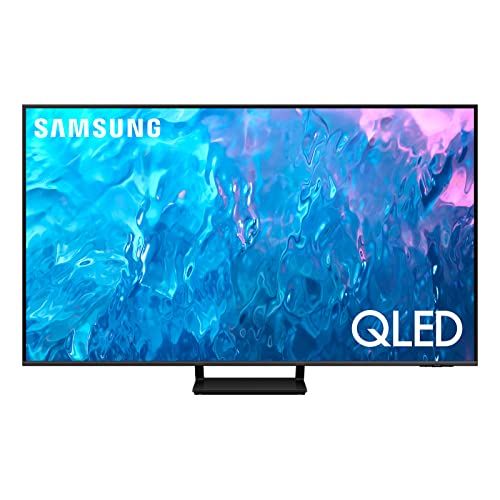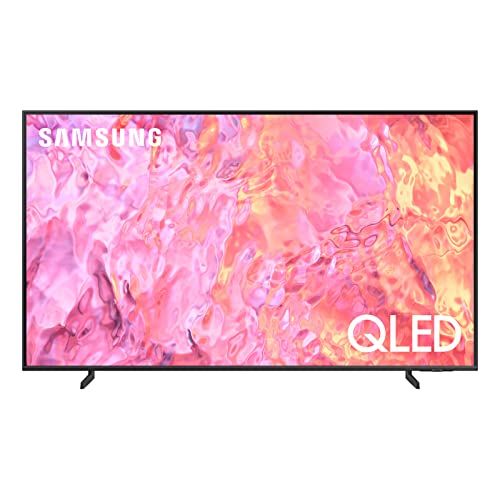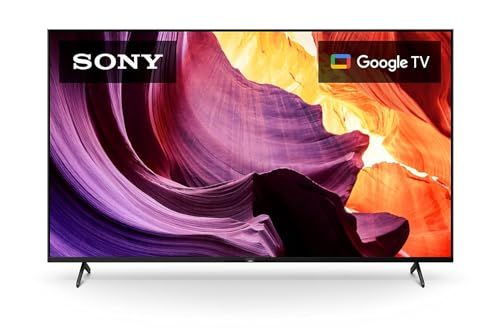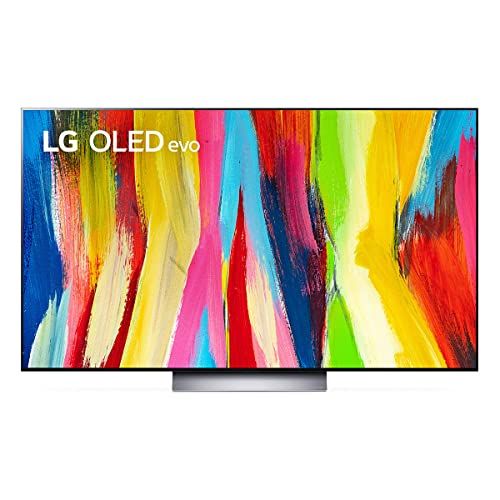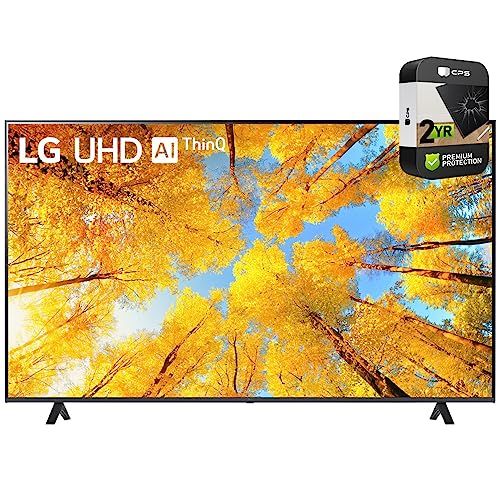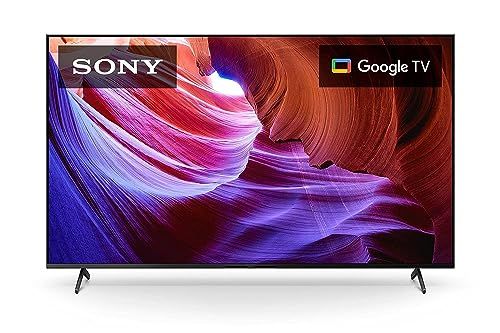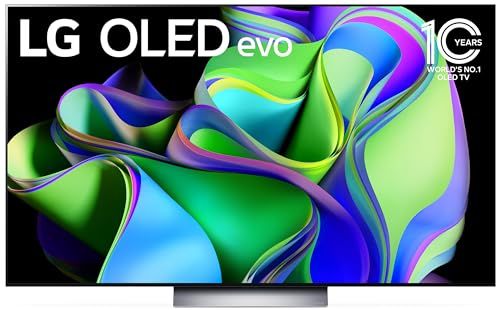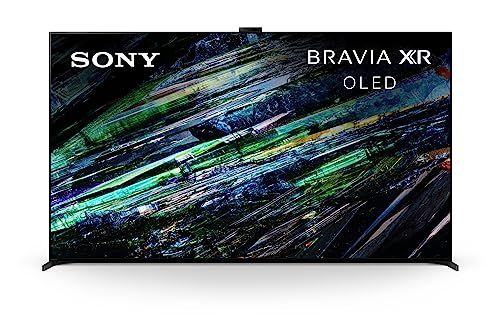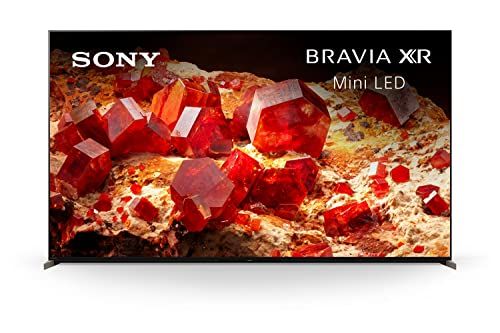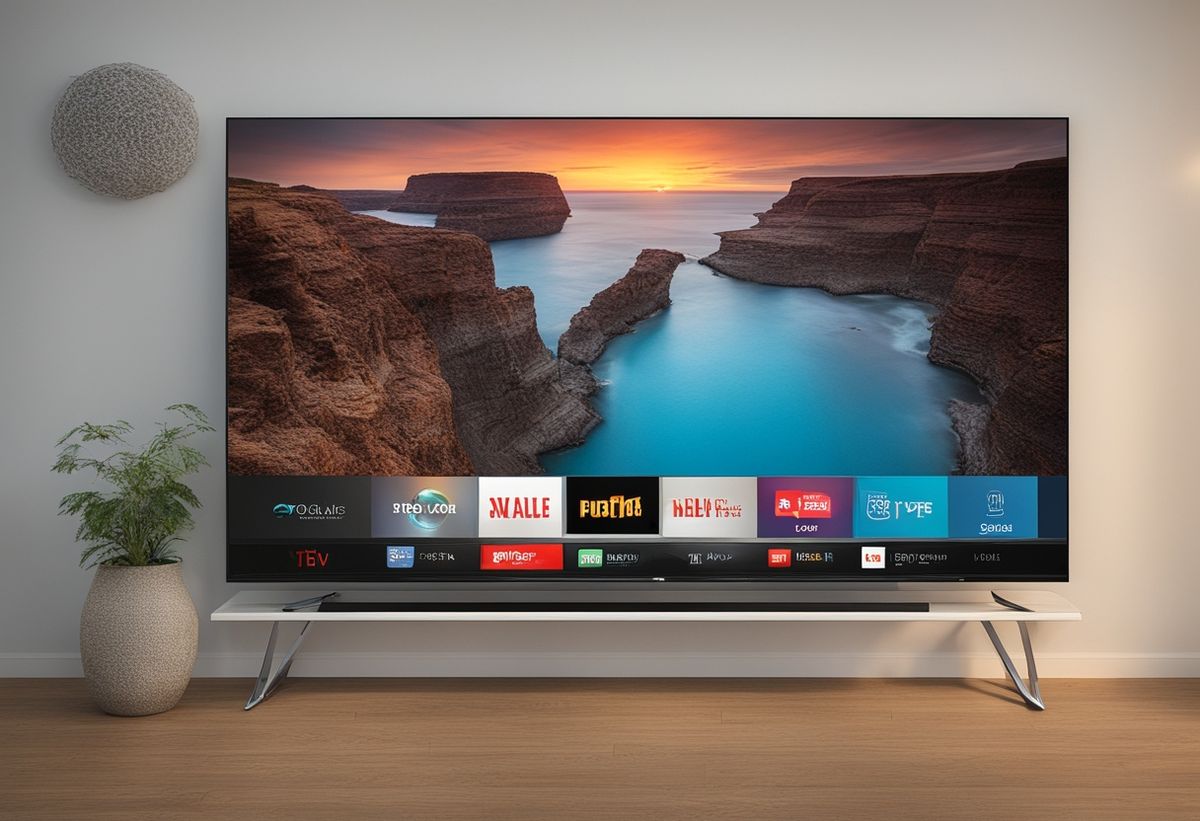
Large screen TVs have come a long way in recent decades. The first rear projection TVs of the late 1970s and early 1980s offered 50-inch and even 60-inch screen sizes but were bulky and had mediocre picture quality compared to today's screens. Early plasma and LCD panels in the late 1990s and early 2000s were limited to smaller sizes under 50 inches due to manufacturing constraints.
Advances in display technology over the past 20 years have enabled the production of large, ultra-thin LED-backlit LCD panels at affordable prices. 65-inch TVs hit the sweet spot of being big enough to provide an immersive cinematic experience at home while still fitting into most living rooms.
The key benefits of 65-inch TVs include:
Large, cinema-like screen for an engaging viewing experience.
Ideal for rooms 8-12 feet away from the screen. Provides eye-catching views without excessive eye movement.
Allows viewers to fully appreciate 4K and 8K ultra high-definition content.
Great for sports, movies, gaming, and as a central hub for smart homes.
More affordable price point compared to larger screen sizes.
65-inch TVs are extremely versatile for home use. Their expansive displays provide an exciting viewing experience for movies, TV shows, and sports. Gamers can take advantage of their fast response times and features. They also work well as information hubs to control other smart home devices. With their sharp image quality and ample screen real estate, 65-inch TVs satisfy both entertainment and functional needs.
Display Technologies for 65-Inch TVs
65-inch TVs are available with different types of display technologies, with the most common being LED, OLED, and QLED. Here is an overview of each:
LED TVs use an LED backlight system to illuminate an LCD (liquid crystal display) panel. They can achieve very bright, vibrant images and deep blacks. LED TVs are generally more affordable than OLEDs.
OLED TVs use organic light-emitting diode pixels that emit their own light. This allows for perfect black levels and infinite contrast, as each pixel can turn on and off independently. OLEDs also offer wider viewing angles. They tend to be more expensive than LED TVs.
QLED TVs use quantum dot technology and are a premium type of LED TV. Quantum dots produce better color accuracy and brightness compared to traditional LED TVs. QLED TVs can achieve blacks that come close to OLED but not quite as deep.
When it comes to picture quality, OLED TVs are considered the best, with their infinite contrast ratio and per-pixel illumination control. They display extremely deep blacks and vibrant, accurate colors. LED/QLED TVs can get very bright but lack local dimming precision. OLEDs may be better for dark room viewing while LED/QLED excel in bright rooms. Ultimately, OLED TVs produce the most realistic and lifelike image quality.
Resolution and Viewing Distance
Resolution refers to the number of pixels on a TV screen, which determines the level of detail and sharpness you'll see in the picture. The two main resolutions to consider for 65-inch TVs are 4K and 8K:
4K refers to a horizontal resolution of approximately 4,000 pixels. This is currently the most common resolution for 65-inch TVs, and provides excellent image quality with four times as many pixels as 1080p Full HD resolution. 4K is great for everyday viewing from a normal couch distance.
8K doubles the pixel count again to around 8,000 pixels horizontally. It offers increased sharpness compared to 4K for an even more lifelike viewing experience. However, 8K content is still limited. The extra detail of 8K really shines when you sit closer to a very large screen.
The optimal viewing distance depends on the resolution. For a 65-inch 4K TV, the ideal distance is between 6-9 feet away. This lets you fully appreciate the 4K resolution without seeing individual pixels.
For 65-inch 8K TVs, you'll need to sit closer to discern the extra detail - ideally 4-6 feet away. If mainly watching 4K content, you can sit further back around 6-9 feet. Consider your typical seating position when deciding between 4K and 8K models.
Smart TV Platforms
Smart TV platforms power the smart features and apps on modern TVs. The most common platforms found on 65-inch TVs include:
Android TV - Developed by Google, Android TV provides access to the Google Play store with thousands of apps. It has a simple and intuitive interface, built-in Google Assistant for voice controls, and Chromecast functionality for easy media streaming.
webOS - Created by LG, webOS offers a visually appealing interface and provides quick access to popular streaming apps. It's highly customizable and very easy to use with point and click navigation.
Tizen - Samsung's Tizen OS powers their line of smart TVs. It offers a wide range of apps, excellent multitasking capabilities, and seamless smart home integration. The interface is polished and intuitive.
Roku TV - Roku's platform is designed specifically for the simplicity and ease-of-use of a TV interface. It provides easy access to thousands of streaming channels and apps. The home screen can be customized with preferred apps and inputs.
Some factors to consider when choosing a smart TV platform include app availability, ease of use, customization options, voice controls, smart home compatibility, and how frequently the platform receives updates from the manufacturer. Those looking for the widest app selection may want to consider Android TV, while webOS and Tizen are great for intuitive and responsive interfaces. Roku TV offers simplicity for a smart TV experience.
Gaming Features
65-inch TVs offer an immersive gaming experience with their large screens and impressive visuals. Many new models are optimized for gaming with features tailored specifically for console and PC gamers.
HDMI 2.1 - The latest HDMI 2.1 ports provide higher bandwidth to enable 4K resolution at 120Hz refresh rate. This results in smooth, ultra low-input lag gameplay for fast-paced action. HDMI 2.1 also supports advanced gaming features like Auto Low Latency Mode (ALLM), Variable Refresh Rate (VRR) and Quick Media Switching (QMS).
Variable Refresh Rate (VRR) - VRR synchronizes the refresh rate of the TV with the frame rate output of the console or GPU. This eliminates screen tearing and stuttering resulting in buttery smooth gameplay. Popular implementations of VRR are AMD FreeSync and Nvidia G-Sync.
Auto Low Latency Mode (ALLM) - ALLM automatically switches the display to low latency game mode when a compatible console is connected. This minimizes input lag for lag-free responsiveness when gaming.
Low Input Lag - Input lag is the time delay between an input to a display and seeing the output. Low input lag under 20ms is crucial for competitive online gaming where quick reflexes matter. High-end 65-inch TVs have dedicated gaming modes to reduce input lag and latency.
Quick Response Times - Fast response times indicate how quickly pixels can change from one color to another. Quick gray-to-gray response times under 5ms provide crisp, blur-free motion clarity for fast-paced action scenes in video games.
Ports and Connectivity
When shopping for a new 65-inch TV, it's important to consider the ports and connectivity options. This determines what other devices you can hook up to the TV and how seamless the connections will be.
Most 65-inch TVs today have multiple HDMI inputs. HDMI is the standard for high-definition video and audio connections. The latest spec is HDMI 2.1, which supports higher video resolutions and frame rates, up to 10K at 120Hz. At a minimum, look for HDMI 2.0 ports which enable 4K video at 60Hz. Aim to get at least 3-4 HDMI ports so you can connect multiple devices like a cable/satellite box, Blu-ray player, and gaming console.
In addition to HDMI, most 65-inch TVs also offer USB ports for plugging in external devices like hard drives and flash drives. Typically there are 2-3 USB ports, with at least one USB 3.0 for faster data speeds. Some TVs have USB ports that support recording live TV or pause/rewind functions when used with compatible tuners or antennas.
For smart TV capabilities and internet connectivity, an Ethernet port allows for the most stable wired network connection. However some TVs substitute Ethernet for WiFi only connectivity. Make sure to check the specs if a wired network is preferred.
Other legacy ports you may find on 65-inch TVs include analog audio inputs, optical digital audio output, coaxial input, component video, and composite video. While not commonly used today, these provide backwards compatibility with older AV equipment.
Audio Quality
When it comes to audio quality on 65-inch TVs, there are a few key factors to consider:
Speaker Types and Power Output
The speaker configuration can vary, with some models featuring 2 speakers while others may have 4 or more built-in speakers. More speakers allow for better surround sound effects.
Look for the speaker power output measured in watts. Higher wattage speakers can get louder and handle high volumes better. For a 65-inch TV, speaker power around 20-40W is typical.
Sound formats - Most 65-inch TVs support basic stereo sound. Higher-end models may support advanced formats like Dolby Atmos for immersive 3D sound effects.
Soundbars vs Built-in Speakers
While built-in TV speakers have improved over the years, they can't match the sound quality of a dedicated soundbar.
Soundbars have separate components for the woofers, tweeters, and amplifiers. This allows for better frequency response and audio clarity.
A good 65-inch TV paired with a premium soundbar like Sonos Arc or Bose Smart Soundbar 900 can create an exceptional home theater experience.
If going for a soundbar, make sure the TV has an ARC or eARC HDMI port for easy connectivity and audio sync between TV and soundbar.
Design and Aesthetics
The design and aesthetics of a 65-inch TV can dramatically impact both visual appeal and viewing experience. Two key factors are thickness/bezel size and ambient light handling.
Thickness and Bezel Size
Modern 65-inch TVs are incredibly thin compared to older models, with many flagship sets less than 1 inch thick. This allows for streamlined, striking designs ideal for wall mounting.
Bezel size has also shrunk over time. Narrow or invisible bezels give a nearly all-screen look when viewing content, creating an immersive effect.
Consider a thin TV with small bezels if aesthetics are a priority and you plan to wall mount. This creates a striking, contemporary appearance.
Ambient Light Rejection
Living rooms and family spaces often have light sources like lamps and windows. This ambient light can wash out the TV image if the set doesn't handle reflections well.
Look for a 65-inch TV with strong anti-reflective screen coatings and high brightness. These features allow the TV to cut through glare and render crisp, vivid images even in bright rooms.
Full-array local dimming, where independent LED zones turn off to block light, also improves contrast in bright conditions. OLED screens handle ambient light especially well.
Prioritizing thinness, minimal bezels, anti-glare coatings, and dimming technology allows a 65-inch TV to look great and deliver an immersive viewing experience regardless of room conditions.
Smart Home Integration
A key benefit of larger 65-inch and up TVs is how well they can integrate into a smart home ecosystem. Most 65-inch TVs released in the past few years come with built-in support for popular voice assistants like Amazon Alexa and Google Assistant. This allows you to control certain TV functions like turning it on/off, changing channels/inputs, and adjusting volume simply by speaking out voice commands.
Having a TV with Alexa or Google Assistant integration also allows you to pair it with other smart home devices that use those platforms. For example, you can create routines and automation flows that involve both your smart TV and IoT devices like smart lights, thermostats, security cameras, and more. That way you can create an immersive home theater experience where the lighting, temperature, and other devices automatically adjust when you turn on the TV.
Many 65-inch smart TVs also work with Apple HomeKit for iOS users. This also provides hands-free control and automation capabilities. Some higher-end models even include far-field microphones built into the TV, allowing you to issue voice commands from across the room without needing an external smart speaker.
In terms of brands, LG, Samsung, Sony, and Vizio have some of the best integration and support for major smart home platforms. Their TV software and mobile apps allow you to easily connect third-party devices and set up custom routines involving your new 65-inch TV. If you already have an established smart home environment, be sure to look for compatibility when choosing your next big-screen TV.
##Top Brands and Models
When looking for a 65 inch TV, going with a top brand is important to ensure a quality product with great features and longevity. Here are some of the top manufacturers making 65 inch TVs and a couple current models to consider from each:
Samsung
Samsung QN65Q70AAFXZA - This 2021 model Quantum Dot LED TV has a bright, vivid display and comes packed with gaming features like FreeSync Premium Pro. It's also a smart TV with the Tizen platform.
Samsung QN65QN85AAFXZA - A premium Samsung Neo QLED with Mini-LED backlighting for incredible contrast and brightness. Also has Object Tracking Sound+ for immersive audio.
Sony
Sony XR65A95K - Sony's top of the line 2022 OLED TV with the powerful Cognitive Processor XR for optimized picture and sound. Also has Google TV for smart features.
Sony XR65X90K - A 2022 Sony model with impressive Full Array LED backlighting and the XR Contrast Booster to deliver deep blacks and peak brightness. Runs Google TV.
LG
LG OLED65C2PUA - This 2022 model LG OLED TV delivers perfect blacks and intense color thanks to self-lit OLED technology. Has the webOS smart platform and built-in Google Assistant/Amazon Alexa.
LG 65NANO75UPA - A more affordable LG option, this 2021 LED TV still provides vivid 4K viewing and webOS for smart features. Has a slim, modern design.
Vizio
Vizio OLED65-H1 - An affordable 65-inch OLED option from Vizio, providing stunning image quality with pure blacks. Has Vizio's SmartCast smart platform.
Vizio P65Q9-J01 - This 2021 Vizio model offers quantum dot enhancement for expanded color and brightness. Features gaming amenities like VRR and AMD FreeSync.
65 inch TVs comparison
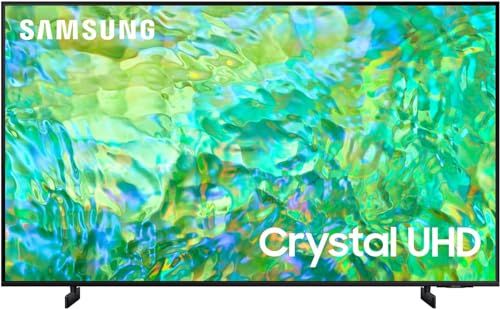 | 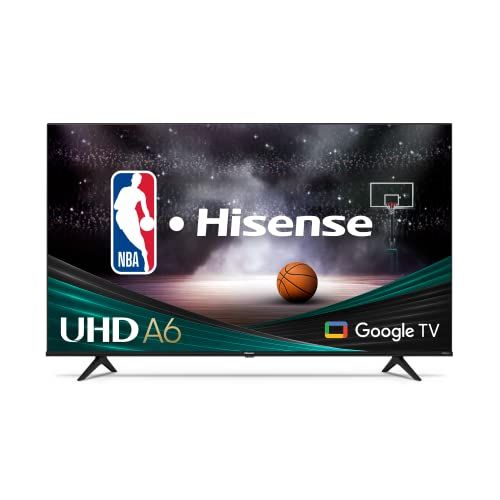 | 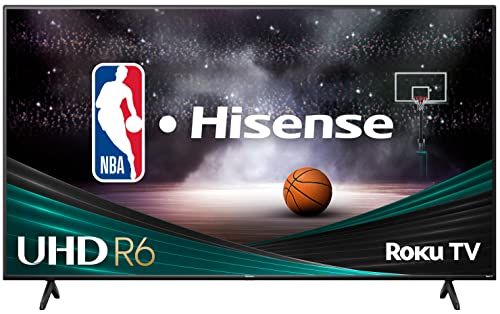 | 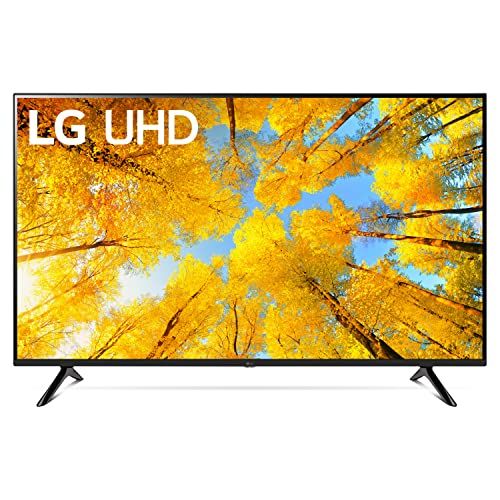 | 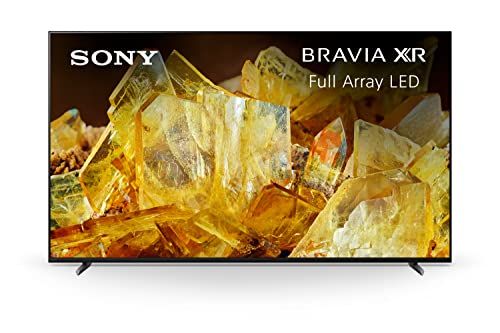 | |
|---|---|---|---|---|---|
| Model | SAMSUNG UN65AU8000FXZA | Hisense 65A6H | Hisense 65R6G | LG 65UQ7570PUJ | Sony XR65X90L |
| Brand | SAMSUNG | Hisense | Hisense | LG | Sony |
| Display technology | LED | LED | LED | LCD | LED |
| Resolution | 4K | 4K | 4K | 4K | 4K |
| Screen size | 65 Inches | 65 Inches | 65 Inches | 65 Inches | 65 |
| Refresh rate | 60 Hz | 60 Hz | 60 Hz | 60 Hz | 120 |
| Dimensions | 11.1"D x 57.1"W x 34.4"H | 11.5"D x 57.2"W x 35.3"H | 2.9"D x 57.2"W x 32.8"H | 11.9"D x 57.1"W x 35.4"H | 13.63"D x 57"W x 34"H |
| Special feature | Dynamic Crystal Color, HDR, Crystal Processor 4K, Smart TV with Multiple Voice Assistants | Flat | Roku TV Operating System, Game Mode, Chromecast, Works with Alexa and Google Assistant, 4K Ultra HD TV Roku TV Operating System, Game Mode, Chromecast, Works with Alexa and Google Assistant, 4K Ultra HD TV See more | a5 Gen5 AI Processor; Active HDR; Filmmaker Mode; Game Optimizer; Home Dashboard; 4K Upscaling; TV Sound Mode Share; Magic Explorer; Next Picks; Cloud Gaming a5 Gen5 AI Processor; Active HDR; Filmmaker Mode; Game Optimizer; Home Dashboard; 4K Upscaling; TV Sound Mode Share; Magic Explorer; Next Picks; Cloud Gaming See more | NEW Eco Dashboard, NEW Game Menu, Exclusive features for PlayStation, Billions of colors with XR Triluminos Pro, Movies on us with BRAVIA CORE (5 credits/12 months) NEW Eco Dashboard, NEW Game Menu, Exclusive features for PlayStation, Billions of colors with XR Triluminos Pro, Movies on us with BRAVIA CORE (5 credits/12 months) See more |
| Special features | Dynamic Crystal Color, HDR, Crystal Processor 4K, Smart TV with Multiple Voice Assistants | Flat | Roku TV Operating System, Game Mode, Chromecast, Works with Alexa and Google Assistant, 4K Ultra HD TV | a5 Gen5 AI Processor; Active HDR; Filmmaker Mode; Game Optimizer; Home Dashboard; 4K Upscaling; TV Sound Mode Share; Magic Explorer; Next Picks; Cloud Gaming | NEW Eco Dashboard, NEW Game Menu, Exclusive features for PlayStation, Billions of colors with XR Triluminos Pro, Movies on us with BRAVIA CORE (5 credits/12 months) |
| Weight | 46.1 Pounds | 25.8 Kilograms | 36.4 Pounds | 37 Pounds | 25 Kilograms |
| Country of origin | - | - | China | Mexico | Mexico |
| Speaker type | Built-In | Built-In | Built-In | Built-In | Acoustic Multi-Audio |
| Included components | User Manual, E - Manual, OneRemote TM2180E with batteries, Power Cable | TV, Voice Remote Control, Power Cable, Alkaline Batteries, Quick Start Guide | Stand, TV, Remote Control, Power Cable, Quick Start Guide | Stand, Standard Remote Control, Power Cable, Remote Control Battery (AAA), Quick Start Guide | Power Cable, Remote Control, AAA batteries, Stand |
| Supported services | Apple TV+, Disney+, Google Play Movies & TV, Hulu, Netflix, Prime Video, SHOWTIME, Sling TV, YouTube Apple TV+, Disney+, Google Play Movies & TV, Hulu, Netflix, Prime Video, SHOWTIME, Sling TV, YouTube See more | YouTube, Prime Video, Google Play Music, Disney+, Twitch, HBO Max, Google Play Movies & TV, Netflix, Tubi, Peacock YouTube, Prime Video, Google Play Music, Disney+, Twitch, HBO Max, Google Play Movies & TV, Netflix, Tubi, Peacock See more | Disney Plus, Netflix, Prime Video, Hulu, Apple TV | Netflix, HBO Max, Disney Plus, Prime Video, Apple TV | Prime Video, Hulu, Netflix, Disney Plus, HBO Max, Airplay 2, Peacock, Apple TV |
| Price | $747.95 | - | $419.99 | $446.99 | $1198 |
FAQ
How large are 65 inch TVs?
A 65 inch TV has a screen size that measures 65 inches diagonally across the screen. This is a very large TV size that provides an immersive viewing experience.
What resolution is common for 65 inch TVs?
Most new 65 inch TVs today have 4K resolution, which is 3840 x 2160 pixels. This provides ultra HD picture quality with 8 million pixels for sharp image detail and clarity.
What types of display technology are used for 65 inch TVs?
Common display technologies for 65 inch TVs include LED, QLED and OLED. LED uses an LCD panel lit by LED backlighting. QLED is an advanced type of LED. OLED uses self-emitting pixels for high contrast.
Do 65 inch TVs have smart capabilities?
Yes, most modern 65 inch TVs are smart TVs, meaning they have integrated WiFi and smart platforms that allow you to connect to the internet, access streaming apps like Netflix and watch web videos.
What connectivity options do 65 inch TVs have?
Connectivity on 65 inch smart TVs typically includes 3-4 HDMI inputs to connect devices like Blu-ray players, gaming consoles and cable boxes. There are also USB ports to view photos/videos from a flash drive and audio ports for soundbars.
What features should I consider when choosing a 65 inch TV?
Key features to consider are the display resolution and technology, smart platform, number of HDMI ports, refresh rate, peak brightness, contrast ratio and viewing angles. Consider your needs for gaming, streaming or cable TV.
How far should I sit from a 65 inch TV?
The ideal viewing distance for a 65 inch TV is between 8-10 feet away. This allows you to comfortably see the entire screen without excessive eye movement. Sit any closer and you may see pixelation.
Do 65 inch TVs consume a lot of electricity?
65 inch TVs do require more power compared to smaller sets. However, modern 65 inch TVs are very energy efficient, especially newer OLED and Q
Are 65 inch TVs heavy to mount?
Yes, 65 inch TVs are large and heavy. They can weigh 55-75 pounds without the stand. Get help and use proper mounting equipment anchored to studs to safely install it. Hire professionals if unsure.
What accessories are recommended for a 65 inch TV?
Recommended accessories include a surge protector, HDMI cables, wall mounts, soundbars or speakers for audio, streaming device, TV stand if not mounting, cable management items, external storage for apps, and cleaning cloth to keep the screen looking new.
